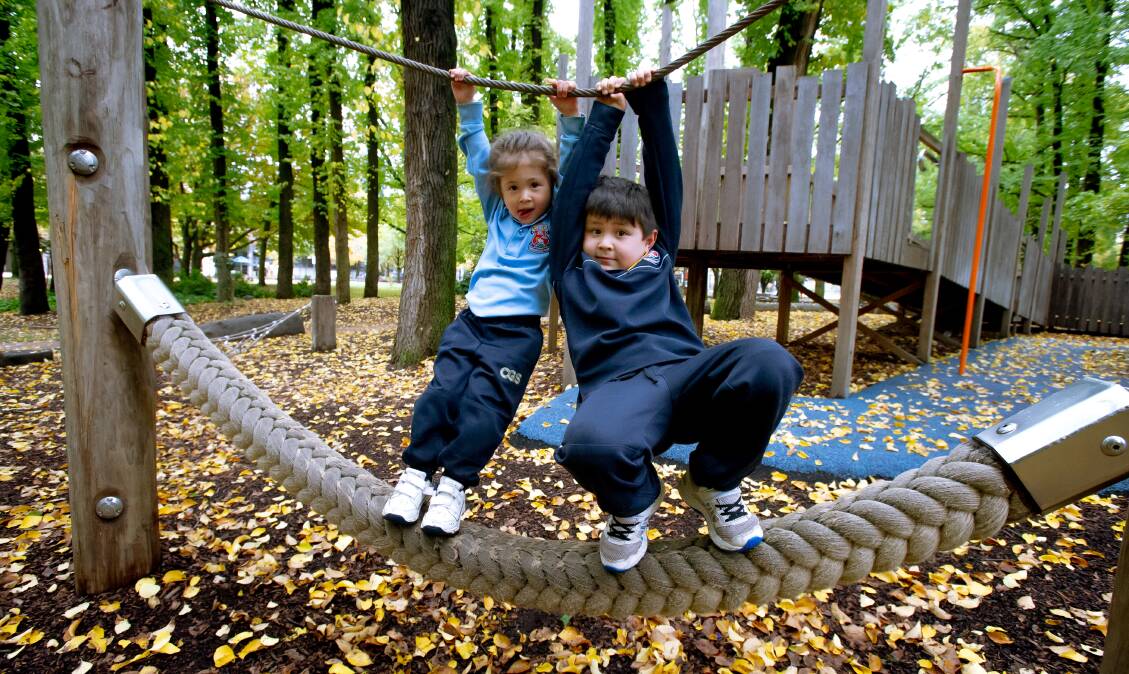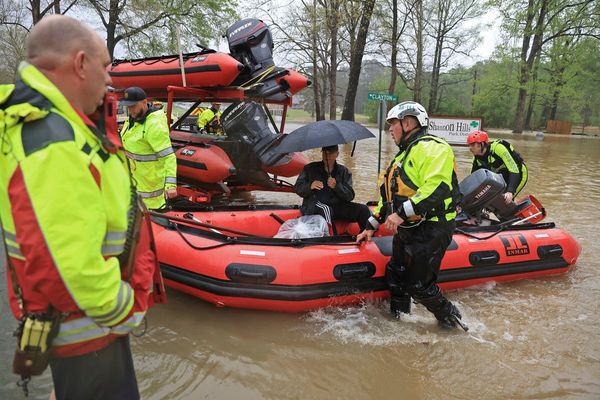
Canberrans have called for riskier and more challenging playgrounds as part of a wide-ranging consultation process on the future of the ACT's play areas.
But the ACT government is not rushing to heighten the danger at its 515 public play spaces after releasing a new play space strategy.
Instead the government said it would examine best practice design to "strengthen the quality and diversity of play experiences".
The government would also develop a "play value index" to identify which sites need repair and improvement.
"Providing safe levels of challenge and risk in play spaces strengthens coordination and orientation skills, allows children to learn about acceptable risk-taking and to successfully navigate their world," the government's strategy said.
And more playgrounds will be fenced in the ACT, in a move that will make the sites more accessible for families with children who have special needs.
City Services Minister Chris Steel said play was essential to cognitive, physical and social development of children and young people.
"The new strategy guides the forward planning, delivery and management of more than 500 playgrounds across the ACT," Mr Steel said.
"It creates a framework to deliver an equitable, inclusive, diverse, safe and engaging mix of play opportunities across Canberra."
The strategy follows a consultation period last year, which found 91 per cent of survey respondents fully or mostly supported making sure ACT play spaces were accessible and inclusive.
"Fencing around play spaces was seen as a high priority by some to help keep children safe from busy roads or getting lost. This is seen as particularly important for children with additional-needs or carers supervising multiple children," a consultation report released by the ACT government said.
Nine per cent of respondents said they visited a playground with their family or child daily, while 55 per cent said they visited at least weekly.
The government said it would focus on six areas, that covered making play spaces accessible and safe, offering diversity and partnering with communities on play spaces.
"We will continue to improve the quality and diversity of play experiences across the network, with a focus on types of play experiences that are less common within ACT play spaces, such as more risk-based, challenging, nature-based and intergenerational play activities," the strategy said.
The strategy said the government intended to have a district play space in each district of the ACT.
"They will generally include structured play equipment, nature play, open space, barbeques, picnic shelters, toilets, car parks and landscaped areas to encourage large group gatherings and longer visits," the strategy said.
"District play spaces are the kind of facilities that families may make a dedicated outing to on the weekend, making them a 'destination' play space."
There are currently no district play spaces in Weston Creek and the Molonglo Valley.
There are 6.7 playgrounds for every 1000 children in the ACT, higher than the Australian average of 5.2 playgrounds, the strategy said.
"Most residences in Canberra are within 400 metres of a local playground and this ease of access to a play space and the surrounding green space is highly valued by the community," the strategy said.
"However, many local play spaces in Canberra's older suburbs have low play value because they cater to limited age ranges and lack the quality of play experience available in newer, larger play spaces."
The strategy pointed to figures from ACT Health that showed almost half of children aged between five and 15 in the territory exceeded recommended screen activity time.
The data also showed 22 per cent of the cohort were meeting the physical activity guideline for children, which the government said contributed to the ACT having a high rate of children aged five to 15 who were overweight or obese.
"These high levels of sedentary behaviour among children and adults provide a further impetus for improving the range of play experiences across our play space network and encouraging people across the lifespan to engage in physical activity and outdoor recreation," the government's strategy said.







